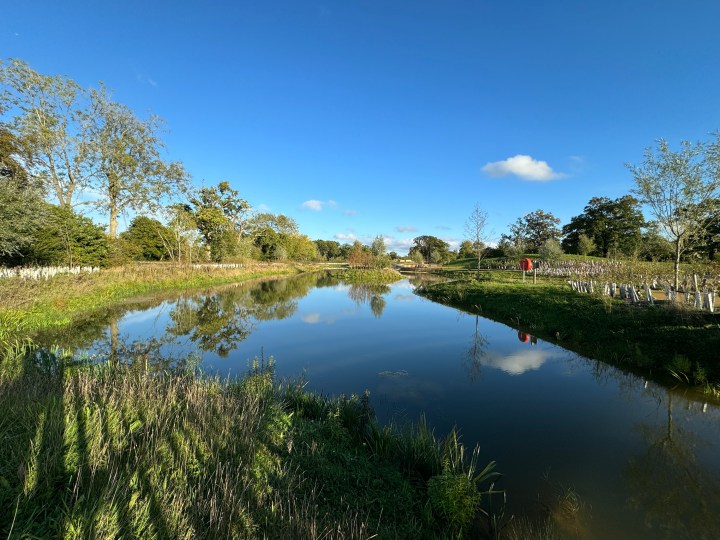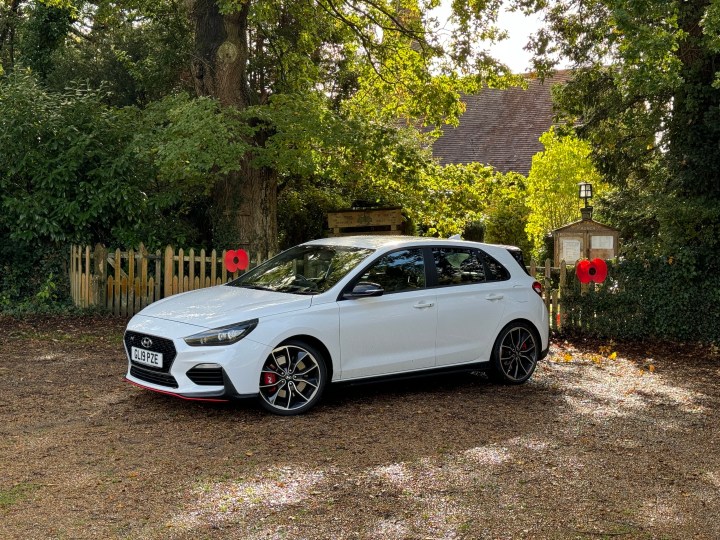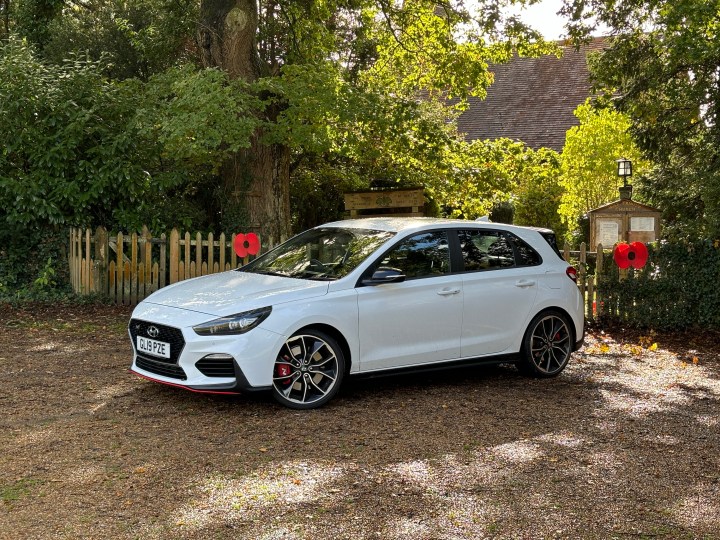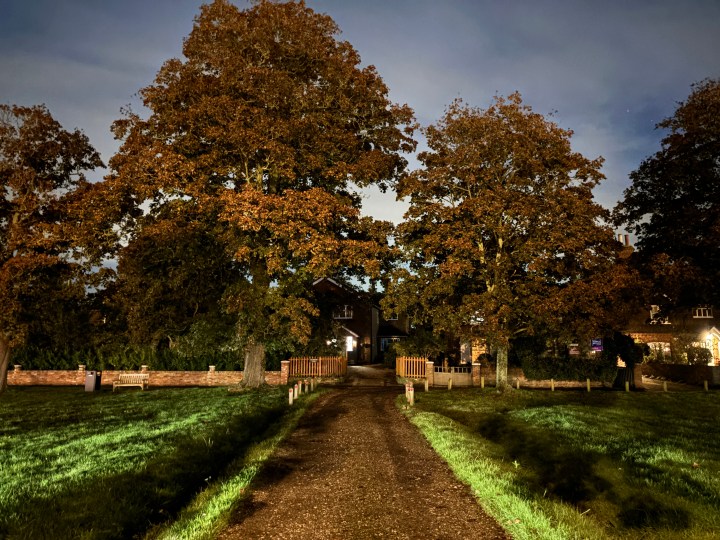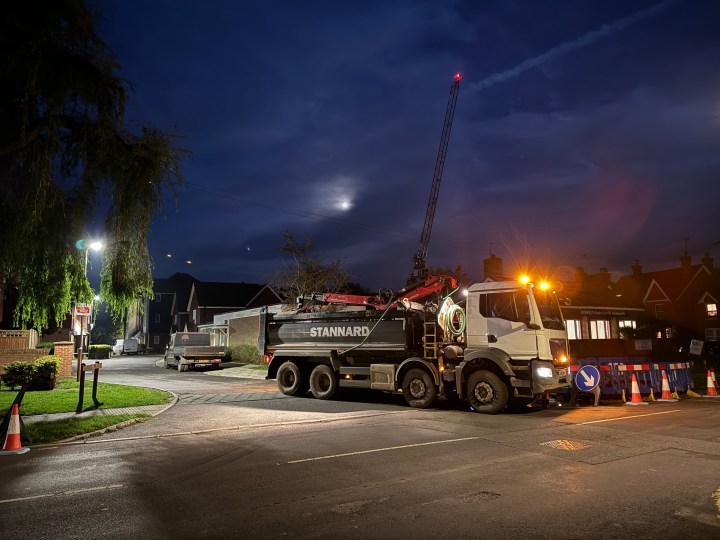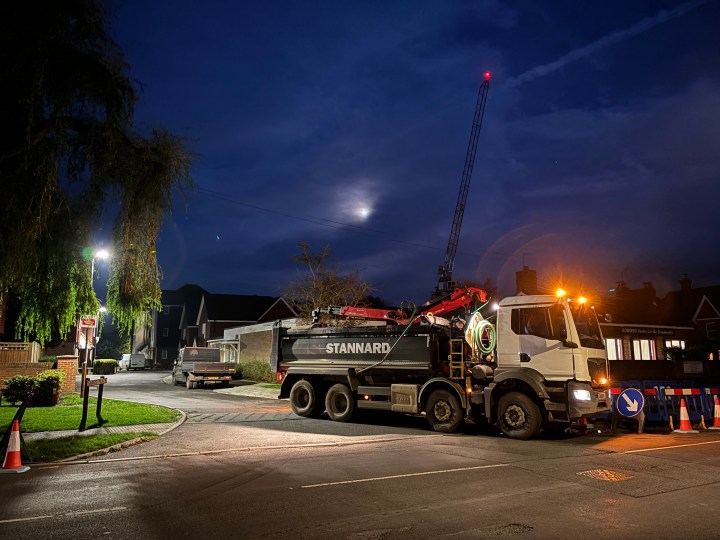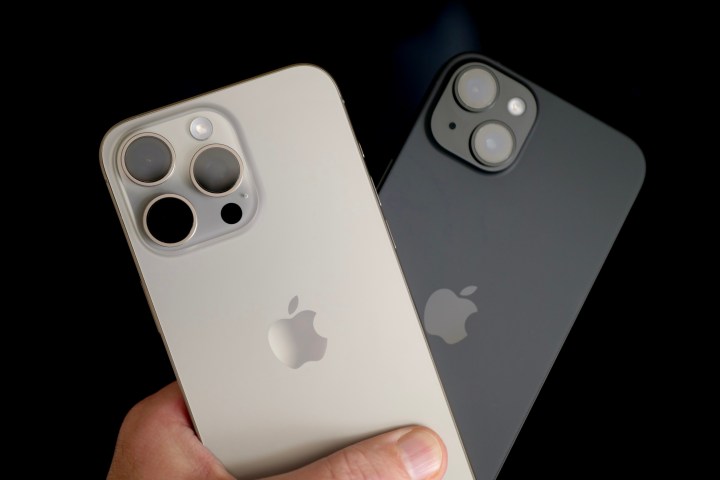
An iPhone 15 with a big screen is calling your name, and this year you really do have a choice of two. The iPhone 15 Pro Max has grabbed headlines with its titanium body and improved camera, but the iPhone 15 Plus has the same size screen and is $200 cheaper; plus, it’s a great phone overall.
- What about the camera hardware?
- iPhone 15 Pro Max vs. iPhone 15 Plus: main camera
- iPhone 15 Pro Max vs. iPhone 15 Plus: macro and close-up
- iPhone 15 Pro Max vs. iPhone 15 Plus: wide-angle camera
- iPhone 15 Pro Max vs. iPhone 15 Plus: telephoto and zoom
- iPhone 15 Pro Max vs. iPhone 15 Plus: Night mode
- iPhone 15 Pro Max vs. iPhone 15 Plus: selfies
- Unsurprising win, with a surprising loss
But what about the camera? It’s highly likely the iPhone 15 Pro Max’s camera will win in a test, but by how much? If it’s not a vast difference, you may be fine living with the iPhone 15 Plus and saving money on the purchase price. This is what we’re about to find out in our camera shootout, and the results may surprise you.
What about the camera hardware?
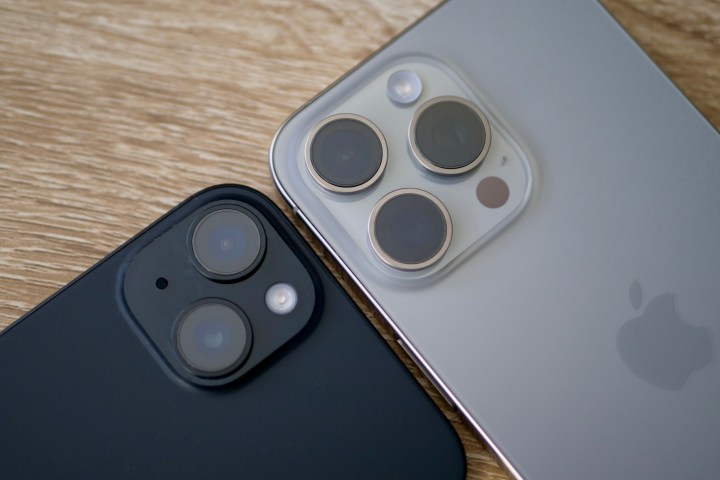
The iPhone 15 Pro Max has a 48-megapixel main camera, a 12MP wide-angle camera, and a 12MP telephoto camera. This setup provides a 2x and a 5x optical zoom, plus there’s all kinds of software trickery to enhance your images — including Apple’s Photonic Engine and Smart HDR 5. It utilizes Apple’s second-generation optical image stabilization, can shoot macro shots, and in the ProRAW format too.
The iPhone 15 Plus uses the A16 Bionic processor and not the A17 Pro in the iPhone 15 Pro Max. Although it’s a 48MP main camera, it’s different from the one fitted to Apple’s top new iPhone. It’s joined by a 12MP wide-angle camera, but there’s no telephoto camera, so you only get a simple 2x optical zoom. It doesn’t offer a macro mode, and it’s the previous generation of optical image stabilization, but features like the Photonic Engine and Smart HDR 5 remain.
On paper, the iPhone 15 Pro Max’s camera is far superior, but how is this reflected in photos? The photos below were taken on various different days and using auto mode, then examined on a color-calibrated monitor. They have also been resized for friendlier online viewing.
iPhone 15 Pro Max vs. iPhone 15 Plus: main camera
This comparison is defined by three things: focus, noise, and sharpness. Sometimes the differences are not that noticeable until you crop the image down, but in other instances, it’s very obvious. Before you think all this applies positively only to the iPhone 15 Pro Max, think again.
- 1. Apple iPhone 15 Pro Max
- 2. Apple iPhone 15 Plus
Our first photo shows what I’ve found throughout the comparison. The iPhone 15 Plus has more accurate focus in some cases and can often take sharper photos. The metal plate behind the door knocker and the wood surrounding it are more sharply focused in the iPhone 15 Plus’s photo, and while it’s not blurry in the iPhone 15 Pro Max’s image, it’s missing that slight bit of sharpness. I love the colors and tones in both photos.
- 1. Apple iPhone 15 Pro Max
- 2. Apple iPhone 15 Plus
It’s less obvious in the next photo, but the iPhone 15 Plus’ stronger depth of field is noticeable, as are the iPhone 15 Pro Max’s more natural color tones. Crop down, and both are quite similar. I have a hard time deciding which photo I prefer, but my eye is more often drawn to the iPhone 15 Plus’ image. It’s not a better quality image, and there’s nothing wrong with the iPhone 15 Pro Max’s photo, but the Plus’ camera seems to be better tuned for this type of close-up.
- 1. Apple iPhone 15 Pro Max
- 2. Apple iPhone 15 Plus
Take a look at the sign closest to us in the next photo, along with the ground underneath it, and notice how it’s more sharply focused in the iPhone 15 Plus’ photo, while there’s arguably better contrast and color in the iPhone 15 Pro Max’s photo. After these three images, you can see the Pro Max prefers to focus more deeply on an image than the iPhone 15 Plus, which can make close-up photos less visually appealing.
- 1. Apple iPhone 15 Pro Max
- 2. Apple iPhone 15 Plus
More general shots are extremely similar, with a few slight differences. The Pro Max’s contrast gives blue skies a more natural hue, but it can introduce a little more noise in some cases. Otherwise, there’s little difference between them. It means our test has opened with a bit of a shock. Both cameras take great photos, and neither do a bad job at any point. But the Plus not only comes close to matching the Pro Max — it can also sometimes improve on it. This means it’s a draw rather than the blanket win for the iPhone 15 Pro Max that you may have expected.
Winner: Draw
iPhone 15 Pro Max vs. iPhone 15 Plus: macro and close-up
The main cameras take great photos, but there is enough of a difference when taking close-up photos that I need to split it out into another section just to illustrate how much better the iPhone 15 Plus is in this respect. Yes, I said the iPhone 15 Plus is better.
- 1. Apple iPhone 15 Pro Max
- 2. Apple iPhone 15 Plus
The iPhone 15 Pro Max automatically switched to macro mode in the first photo and wouldn’t focus properly when I turned it off — favoring the background instead of the flower. The Pro Max photo above is from macro mode. No such feature exists on the iPhone 15 Plus, and the result from the Plus is still so much more appealing with its super depth of field and more detail.
The second photo was the best I could do with the iPhone 15 Pro Max. It wouldn’t focus on the spider web in standard or macro modes, while the iPhone 15 Plus focused on it without a problem. This is the only photo where I used tap to focus, which still made no difference with the iPhone 15 Pro Max.
- 1. Apple iPhone 15 Pro Max
- 2. Apple iPhone 15 Plus
While there aren’t really any major differences between the two when taking regular main camera photos, there were hints that the Plus was better at getting close to a subject. This is likely down to the hardware rather than the software, so perhaps it is a quirk of the system and not something that will be fixed in a software update. The iPhone 15 Plus beats the iPhone 15 Pro Max here, and it was quite unexpected.
Winner: iPhone 15 Plus
iPhone 15 Pro Max vs. iPhone 15 Plus: wide-angle camera
Sharper, less noise, better focus. Once again, these three terms are applicable when looking at the wide-angle camera, but this time it’s the iPhone 15 Pro Max that pulls ahead. It’s not by much, and sometimes you need to crop to see the differences, but the wide-angle camera on the iPhone 15 Plus does lag here.
- 1. Apple iPhone 15 Pro Max
- 2. Apple iPhone 15 Plus
In the iPhone 15 Plus’ photo of the church, there’s more edge enhancement at play around the steeple and along the top of the roof, while the Pro Max avoids all this and, at the same time, pulls in more detail and more sharply focuses on the points closest to the camera. You can see the improved contrast and exposure throughout and spot less noise in the sky too.
- 1. Apple iPhone 15 Pro Max
- 2. Apple iPhone 15 Plus
Inside the church, the differences are even more noticeable. There’s a lot of noise in the Plus’ photo, with the stained glass windows and ceiling lights in particular showing off the differences between the two cameras. Lighting wasn’t terrible inside, so the Plus can’t use low light as an excuse here.
- 1. Apple iPhone 15 Pro Max
- 2. Apple iPhone 15 Plus
The iPhone 15 Pro Max isn’t always perfect, and there’s plenty of noise in the sky in our final photo (from both cameras), but the Plus then makes a mess of the water, which is smoother and less noisy in the Pro Max’s photo. I ended up having much more confidence in the Pro Max’s wide-angle camera than the Plus’, and the differences between them are obvious.
Winner: iPhone 15 Pro Max
iPhone 15 Pro Max vs. iPhone 15 Plus: telephoto and zoom
Let’s get this out of the way first: The iPhone 15 Pro Max’s 5x optical zoom is of better quality than the iPhone 15 Plus’ digital zoom. At first glance, it may not seem like there’s much difference, so I’ve cropped the image down (above) to illustrate how much more detail is in the Pro Max’s telephoto image than the Plus’ digital photo. There’s no contest here, but it’s hardly a big surprise.
- 1. Apple iPhone 15 Pro Max
- 2. Apple iPhone 15 Plus
The 2x optical zoom mode is a different story, and both take quite similar photos. The environment around the car looks almost identical, with no more or less detail in either, but there’s a little change in white balance. The iPhone 15 Plus’ car has a starker tone of white, and although I like the photo, the iPhone 15 Pro Max’s shot is more realistic.
- 1. Apple iPhone 15 Pro Max
- 2. Apple iPhone 15 Plus
However, 2x zoom in general across both phones is not fantastic. There’s visible noise in both photos, the detail in the distance is hardly pin-sharp, and the sky is washed-out too. The iPhone 15 Pro Max’s photo is the better of the two due to a less contrasty look, but it’s only really noticeable when you compare them directly. However, its 5x telephoto ensures it takes the win.
Winner: iPhone 15 Pro Max
iPhone 15 Pro Max vs. iPhone 15 Plus: Night mode
- 1. Apple iPhone 15 Pro Max
- 2. Apple iPhone 15 Plus
Noise plays a big factor in the iPhone 15 Pro Max’s improvements over the iPhone 15 Plus’ camera. The first photo was taken in almost darkness, in that I couldn’t make out the trees much with my own eyes, but the Pro Max avoids all the noise in the sky that’s present in the Plus’ photo. The trees are sharper, as is the grass verge next to the path. There’s a lot of processing at work, but it’s not detrimental to the image.
Even with more ambient light, the iPhone 15 Plus can’t match the iPhone 15 Pro Max in low light. The second photo shows how the sky is noisy and the crane is nowhere near as sharp or clear in the Plus’s photo, which also struggles with detail on the truck and road surface.
- 1. Apple iPhone 15 Pro Max
- 2. Apple iPhone 15 Plus
A lot of the differences between the two cameras likely come down to the A16 Bionic and A17 Pro, plus how the Pro Max can exploit the Photonic Engine in Night mode. Even in these photos, the improvement Apple has made to lowlight photography with the Pro Max is clear, and it’s the best choice if you take lots of photos in this type of environment.
Winner: iPhone 15 Pro Max
iPhone 15 Pro Max vs. iPhone 15 Plus: selfies
Both phones have a 12MP TrueDepth front camera with an f/1.9 aperture and make use of the Photonic Engine, Smart HDR 5, and Deep Fusion technology. The only real difference between them is that on the Pro Max, you can shoot ProRes video at 4K and 60 frames per second.
- 1. Apple iPhone 15 Pro Max
- 2. Apple iPhone 15 Plus
Unsurprisingly, it’s very difficult to say one is better than the other. There are slight differences in the way the Pro Max handles skin tone, and it does seem to be more natural, but overall quality and detail are basically the same. Portrait effects are also the same, with excellent edge recognition throughout.
While I often preferred the iPhone 15 Pro Max’s selfies, it’s only a personal preference and a small tweak in the photo editor achieved the same effect on the Plus. There are no technical improvements between the two, so it’s going to be a draw. However, I do think the selfie camera is very good on both phones.
Winner: Draw
Unsurprising win, with a surprising loss

The iPhone 15 Pro Max wins the comparison with three wins, while the iPhone 15 Plus took one, and the pair had a draw in two other categories. The draw with the Pro Max in the main camera category, which when you consider the price and hype difference between the phones, is actually a bit of a loss for the Pro Max. It really should have dominated the entire test.
The iPhone 15 Plus always took better close-up photos, even when the iPhone 15 Pro Max switched to macro mode, and I could see this being a problem for me. I like photos with a strong depth of field, and the Plus always returned the image I had in my mind. The Pro Max simply didn’t want to take those photos at all.
It’s an overall win for the iPhone 15 Pro Max, and the wide-angle camera and Night mode shots are much better than those taken by the iPhone 15 Plus, but to make it perfect, it really needs to match the Pro’s superior close-up performance too. It’s worth asking yourself what kind of photos you take before settling on one model over the other, just in case one or the other doesn’t quite match your needs. That said, you’re in pretty safe hands with both, and that’s a great situation to be in if your main requirement is a big screen.
















